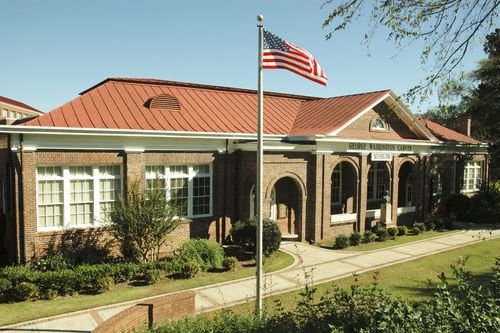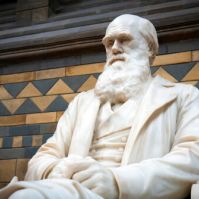 The largest African American museum in America is the Smithsonian Institution's National Museum of African American History and Culture in Washington D.C. If you can’t get to the nation’s capital, you may want to check out these museums where you can learn more about Black history. Of course, you should check with each location before visiting as some locations may have restricted hours due to COVID-19.
The largest African American museum in America is the Smithsonian Institution's National Museum of African American History and Culture in Washington D.C. If you can’t get to the nation’s capital, you may want to check out these museums where you can learn more about Black history. Of course, you should check with each location before visiting as some locations may have restricted hours due to COVID-19.
The George Washington Carver Museum, Tuskegee, Alabama
George Washington Carver is considered one of the most prominent Black scientists in the 20th century. He is probably most known for his work with peanuts, but he was dedicated to farming and environmentalism. This museum is almost 80 years old and features several exhibits that focus on Carver’s history and his work on crop rotation, which led the South to an economic boom.
DuSable Museum of African American History, Chicago, Illinois
In 1961, this museum opened to provide education on parts of history that had been overlooked. A few years later, it was renamed for Jean Baptiste Point du Sable, who was a fur trader and the first non-Native American settler in the community. Its goal is to preserve the Black culture through oral history and art. Today, it is affiliated with the Smithsonian Institution. With a collection of over 13,000 artifacts, books, art and other memorabilia from private gifts, this museum has a broad overview of Black heritage.
Great Plains Black History Museum, Omaha, Nebraska
Omaha’s museum focuses on the contributions of the Black community to the Great Plains development. The executive director and board president recently posted this statement: “We at the GPBHM want everyone to know that we are here for you as a resource to help in educating everyone on the history of African Americans to bring people together and encourage the dialogue needed to bridge the divide and bring us together as one.”
America's Black Holocaust Museum, Milwaukee, Wisconsin
A virtual tour of this museum is available online. Its new building is not quite ready to open. Usually, when people think about the Holocaust, they’re referring to the mass murder of Jews during World War II. This museum considers America’s Black Holocaust over the past 400 years that consists of:
- The 10 to 12 million African citizens who were kidnapped and forced to make the trip to America to become slaves.
- The eight generations of Black children who were born as the property of white adults and never knew any other life except hard labor.
- Even after the Civil War, the system of racial segregation that continued that allowed 5,000 African Americans to be lynched, tortured and burned to death in the South, North and West.
- The continued effects of segregation that continue today that make it difficult for African Americans to take part in the American dream. Over 50% of the people who are sent to prison are Black, even though they only make up 13% of America’s population.
Museum of the African Diaspora, San Francisco, California
A diaspora refers to a scattered population outside of their homeland. Today, this museum focuses on contemporary art, but its mission is still to celebrate Black culture through the lens of the African diaspora. It is a Smithsonian affiliate and largely focuses on exhibits from other museums. It is closed due to COVID-19 restrictions, but it does have some excellent online resources that can be accessed while you’re waiting for things to reopen.
Expand Your Understanding of Other Cultures Through Museums
This short list of museums is exactly that — a very short list of the museums dedicated to Black culture, history and art. When you try to understand the heritage of a culture, you can empathize with their journey. If you can’t visit in person, use online collections to explore more about Black history.



